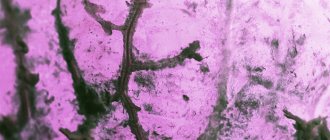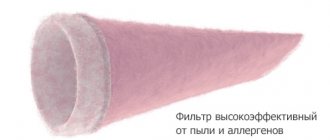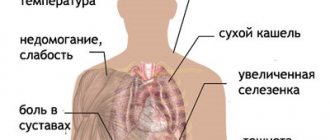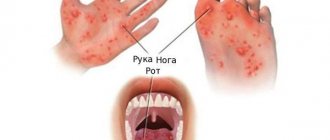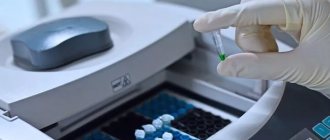| Aspergillus | |
| Conidial Head of Aspergillus niger | |
| Scientific classification | |
| Kingdom: | Mushrooms |
| Separation: | Ascomycota |
| Class: | Eurothiomycetes |
| Order: | Eurotials |
| Family: | Trichocomaceae |
| Genus: | Aspergillus Micheli (1729) |
| Variety | |
| See List of Aspergillus species | |
Aspergillus
(/ˌæsпərˈdʒɪлəs/) is a genus of several hundred mold species found in a variety of climates around the world.
Aspergillus
was first cataloged in 1729 by an Italian priest and biologist.
Pier Antonio Micheli. Examining the mushrooms under a microscope, Micheli recalled the form of aspergillus
(sprinkler of holy water), from the Latin
sparger
(to sprinkle) and named the genus accordingly.[1]
Aspergillum is an asexual common spore-forming Aspergillus
; About one-third of species also have a sexual stage.[2]Aspergillus can be removed from the home using rubbing alcohol (70%) or a strong air purifier to eliminate the effects on the lungs.
Growth and spread
Aspergillus
in detail about tomato
Aspergillus
is defined as a group of conidial fungi, that is, fungi in an asexual state.
However, some are known to have a teleomorph (sexual state) in Ascomycota. With DNA evidence, all members of the genus Aspergillus
are members of Ascomycota.
Members of the genus have the ability to grow where there is high osmotic pressure (high concentration of sugar, salt, etc.). Aspergillus
The species is highly aerobic and occurs in almost all oxygen-rich environments, where they typically grow as molds on the surface of a substrate as a result of high oxygen tension.
Fungi typically grow on carbon-rich substrates such as monosaccharides (Such as glucose) and polysaccharides (Such as amylose). Aspergillus
species are common contaminants of starchy foods (such as bread and potatoes) and grow on many plants and trees.[
citation needed
]
In addition to growing on carbon sources, many Aspergillus
demonstrate oligotrophy where they are able to grow in a nutrient-poor environment or in an environment completely lacking essential nutrients.
Aspergillus niger
is a prime example of this; it can be found on damp walls as it is the main component of mold.
Several species of Aspergillus
, including
A. niger
and
A. fumigatus
, readily colonize structures,[4] with a preference for warm and moist or damp areas such as bathrooms and around window frames.[5]
Aspergillus
millions in pillows.[6]
Causes of aspergillosis
The causative agents of aspergillosis in humans can be the following types of mold fungi of the genus Aspergillus: A. flavus, A. Niger, A. Fumigatus, A. nidulans. A. terreus, A. clavatus. Aspergillus are aerobes and heterotrophs; are able to grow at temperatures up to 50°C and can be preserved for a long time when dried and frozen. In the environment, Aspergillus is ubiquitous - in soil, air, and water. Favorable conditions for the growth and reproduction of aspergillus are found in ventilation and shower systems, air conditioners and humidifiers, old clothes and books, damp walls and ceilings, long-term stored food products, agricultural and indoor plants, etc.
Infection with aspergillosis most often occurs through inhalation when inhaling dust particles containing the mycelium of the fungus. Agricultural workers, employees of paper spinning and weaving enterprises, flour millers, and pigeon breeders are at greatest risk of developing the disease, since pigeons are more likely than other birds to suffer from aspergillosis. The occurrence of a fungal infection is facilitated by infection during invasive procedures: bronchoscopy, puncture of the paranasal sinuses, endoscopic biopsy, etc. Contact transmission of aspergillosis through damaged skin and mucous membranes cannot be ruled out. Nutritional infection is also possible through consumption of food products contaminated with Aspergillus (for example, chicken meat).
In addition to exogenous infection with Aspergillus, cases of autoinfection (by activation of fungi that live on the skin, mucous membrane of the pharynx and respiratory tract) and transplacental infection are known. Risk factors for the incidence of aspergillosis include immunodeficiencies of any origin, chronic diseases of the respiratory system (COPD, tuberculosis, bronchiectasis, bronchial asthma, etc.), diabetes mellitus, dysbacteriosis, burn injuries; taking antibiotics, corticosteroids and cytostatics, radiotherapy. There are frequent cases of the development of mycoses of mixed etiology, caused by various types of fungi - aspergillus, candida, actinomycetes.
Commercial significance
Various Penicillium
,
Aspergillus
species and other fungi growing in axenic culture Historical model
of Aspergillus
, Botanical Museum Greifswald
Aspergillus species
important from a medical and commercial point of view.
Some species can cause infection in humans and other animals. Some infections found in animals had been studied for years, while other species found in animals were described as new and specific to the disease being studied, and others were known as names already in use for organisms such as saprophytes. More than 60 Aspergillus
species are pathogens of medical relevance.[7] In humans, a number of diseases, such as outer ear infections, skin lesions and ulcers, classified as mycetomas are found.
Other species play an important role in commercial microbial fermentation. For example, alcoholic drinks such as Japanese sake
often made from rice or other starchy ingredients (such as cassava) rather than grapes or malted barley.
Typical microorganisms used to produce alcohol, such as yeasts of the genus Saccharomycetes
, cannot ferment these starches.
Consequently, Koji
molds such as
Aspergillus oryzae
are used to break down starches into simpler sugars.[8]
Representatives of the genus are also sources of natural products that can be used in the development of drugs to treat human diseases.[9]
Possibly the largest use of Aspergillus niger
is the main source of citric acid;
this organism accounts for more than 99% of global citric acid production, or more than 1.4 million tons per year.[ citation needed
]
A. niger
is also widely used to produce domestic and foreign enzymes, including glucose oxidase, lysozyme, and lactase.[10] In these cases, the crop is rarely grown on a solid substrate, although this is still common practice in Japan, but is more often grown as a submerged culture in a bioreactor. In this way, the most important parameters can be strictly controlled and maximum performance can be achieved. This process also greatly simplifies the separation of the important chemical or enzyme from the medium and is therefore much more economical.
Diagnostics
Aspergillosis in adults requires a thorough and comprehensive diagnosis, which, first of all, is necessary to identify the type and severity of such a disease.
The first stage of establishing the correct diagnosis is carried out by the clinician to whom the person contacted, based on the predominant symptom. The doctor needs:
- get acquainted with the medical history and life history of the patient - this may indicate some etiological factors;
- conduct a detailed survey of the patient to find out the first time of onset and the degree of intensity of symptom expression. This will enable the clinician to determine the severity of the disease;
- perform a thorough physical examination, which, depending on the situation, may include an ophthalmological examination of the eyes, palpation of the anterior wall of the abdominal cavity, examination of the condition of the skin and nail plates, and listening to the lungs using a phonendoscope.
Instrumental diagnosis of aspergillosis includes:
- chest x-ray;
- biopsies;
- bronchoscopy;
- spirometry;
- CT.
Laboratory tests will also vary depending on the nature of the infection. In most cases, these include:
- study of discharge from the sinuses or external auditory canal;
- microscopic examination of feces;
- general blood test - may indicate the occurrence of an allergic or inflammatory process;
- analysis of sputum produced when coughing - to identify Aspergillus particles;
- blood biochemistry;
- scraping from the skin or nail plates;
- imprint from the surface of the cornea;
- PCR.
Such activities will help not only make the correct diagnosis, but also carry out a differential diagnosis of such a disease.
Study
Four three-day-old Aspergillus
colonies.
Clockwise from top left: A. nidulans
laboratory strain;
a similar strain with a mutation in the yA marker gene is involved in green pigmentation; an A. oryzae
strain used in soybean fermentation;
A. oryzae
Aspergillus
scan taken at 235 magnification under a scanning electron microscope
A. nidulans
(
Emericella nidulans
) has been used as a research organism for many years and was used by Guido Pontecorvo to show parasexuality in mushrooms.
Recently, A. nidulans
was one of the first organisms to obtain a genome from researchers at the Broad Institute.
Since 2008, seven more Aspergillus
species have had their genomes sequenced: the industrially useful
A. niger
(two strains),
A. oryzae
, and
A. terreus
, and the pathogens
A. clavatus
,
A. fischerianus
(
Neosartorya fischeri
),
A. flavus
, and
A. fumigatus
(two strains).[11]
A. fischarianus
is almost never pathogenic, but is very closely related to the common pathogen
A. fumigatus
;
this has been partially sequenced to better understand A. fumigatus
pathogenicity.[12]
Sexual reproduction
Of the 250 Aspergillus species, about 64% have no known sexual state.[13] However, many of these species probably have an as-yet unidentified sexual stage.[13]Sexual reproduction occurs in fungi in two fundamentally different ways. These are outcrossing (in heterothallic fungi), in which two different individuals contribute the nuclei, and self-fertilization or selfing (in homothallic fungi), in which both nuclei come from the same individual. In recent years, sexual cycles have been discovered in many species previously thought to be asexual. These discoveries reflect recent experimental attention to species of particular importance to humans.
A. fumigatus
it is the most common species causing disease in immunocompromised people.
In 2009, A. fumigatus
was shown to have a heterothallic, fully functional sexual cycle.[14] Isolates of complementary mating types are necessary for sex to occur.
A. flavus
is a major producer of carcinogenic aflatoxins in crops around the world. It is also an opportunistic person and animal. pathogen, causing aspergillosis in immunocompromised individuals. In 2009, the sexual condition of this heterothallic fungus occurs when strains of opposite mating types were grown together under appropriate conditions.[15]
A. lentulus
is an opportunistic human pathogen that causes invasive aspergillosis with a high mortality rate.
In 2013, A. lentulus
was found to have a heterothallic functional sexual reproduction system.[16]
A. terreus
widely used industrially to produce important organic acids and enzymes and was the original source of a cholesterol-lowering drug.
lovastatin. In 2013, A. terreus
was found to be capable of sexual reproduction by crossing strains of opposite mating types under appropriate culture conditions.[17]
These findings from Aspergillus
species is consistent with the accumulated evidence from studies of other eukaryotic species, this sex was likely present in the common ancestor of all eukaryotes.[18][19]
A. nidulans
, a homothallic fungus, is capable of self-fertilization. Self-fertilization involves activation of the same sex-specific mating pathways in the outcrossing species, that is, self-fertilization does not bypass the required pathways for outcrossing, but instead requires activation of these pathways in one individual.[20]
Among those Aspergillus
Species that exhibit a sexual cycle are overwhelmingly homothallic (self-fertilizing) in nature.[21]
This observation suggests Aspergillus
species can usually maintain sex, although little genetic variation is produced by homothallic self-fertilization.
A. fumigatus
, a heterothallic (outcrossing) fungus that occurs in areas with widely varying climates and environments, also shows little genetic variation either within geographic regions or globally,[22] again suggesting that sex is, in this case, opposite sex, can be maintained even with little genetic variation.
Genomics
Simultaneous publication of three Aspergillus species
The genome manuscript in
Nature
in December 2005 established this genus as the leading genus of filamentous fungi for comparative genomic studies.
Like most major genome projects, this effort was the result of collaboration between a large sequencing center and a related community of scientists. For example, the Institute for Genomic Research (TIGR) has worked with the A. fumigatus
community.
A. nidulans
was sequenced at the Broad Institute.
A. oryzae
sequencing was performed in Japan at the National Institute of Advanced Industrial Science and Technology.
The Department of Energy's Joint Genome Institute has published the sequence data of the citric acid-producing strain of A. niger
.
TIGER, now renamed the J. Craig Venter Institute, currently leads the A. flavus
genome project.[23]
Aspergillus
is characterized by high levels of genetic diversity and, using protostomal divergence as a scale, is as diverse as the vertebrate phylum, although both interspecific and intraspecific genome structure are relatively plastic.[24]
The genomes of some Aspergillus
species, such as
A. flavus
and
A. oryzae
, are richer and about 20% larger than others, such as
A. nidulans
and
A. fumigatus
. Several mechanisms can explain this difference, although a combination of segmental duplication, genome duplication, and horizontal gene transfer acting piecemeal is well supported.[25]
Genome sizes for sequenced Aspergillus
range from 29.3 Mb for
A. fumigatus
to 37.1 Mb for
A. oryzae
, while the number of predicted genes ranges from approximately 9,926 for
A. fumigatus
to approximately 12,071 for
A. oryzae
.
The genome size of the enzyme-producing strain of A. niger
is intermediate in size at 33.9 Mb.[1]
Prognosis and prevention
The most favorable course is observed with aspergillosis of the skin and mucous membranes. The mortality rate from pulmonary forms of mycosis is 20-35%, and in people with immunodeficiency - up to 50%. The septic form of aspergillosis has a poor prognosis.
Measures to prevent infection with aspergillosis include measures to improve sanitary and hygienic conditions: combating dust in production, wearing personal protective equipment (respirators) by workers in mills, granaries, vegetable stores, weaving enterprises, improving ventilation of workshops and warehouses, regular mycological examination of persons from risk groups.
Pathogens
A little Aspergillus
species cause serious diseases in humans and animals.
The most common pathogenic species are A. fumigatus
and
A. flavus
, which produces aflatoxin which is both a toxin and carcinogen and can contaminate foods such as nuts.
The most common species that cause allergic diseases are A. fumigatus
and
A. clavatus
.
Other species are important as agricultural pathogens. Aspergillus
species cause disease in many grain crops, especially corn, and some variants synthesize mycotoxins, including aflatoxin.
Aspergillus
can cause neonatal infections.[26]
A. fumigatus
(most common type) infections are primary pulmonary infections and have the potential to develop into rapidly necrotizing pneumonia with the potential to spread.
The organism can be distinguished from other common mold infections based on the fact that it takes the form of mold both in the environment and in the host (unlike fungi albicans
which is a dimorphic mold in the environment and yeast in the body).
Symptoms of aspergillosis in humans
Since the respiratory system takes the first blow, the main symptoms of aspergillosis in humans begin to appear precisely from the respiratory system. In a third of cases, the fungus enters the body through the blood and lymph flow and spreads to all organs. This type of aspergillosis has a high mortality rate of about eighty percent. The rarest is cutaneous aspergillosis.
If the fungus has settled on the surface and has not penetrated the mucous membrane, as happens with tracheobronchitis or aspergilloma, then patients note the following symptoms: chronic cough with sputum, sometimes with blood during a strained cough. Most often in such cases there are pathologies of the lungs.
In response to the penetration of spores into the body, human tissues develop certain inflammatory reactions. The most common two types of inflammation are serous-desquamative and fibrous-purulent. With serous-desquamative inflammation, aspergillus causes exfoliation of the epithelium, membranes of the stomach, and lungs with the release of exudate (plasma with blood elements). In the second type - fibropurulent - aspergillus causes the release of exudate with fibrin (clotted blood protein) and a purulent component. The most severe reaction to aspergillosis is the formation of granulomas in the lungs.
Otherwise, aspergillosis gives an acute picture - a dense infiltrate forms in the lungs, which disintegrates. With the blood flow, infection of other organs occurs. At the onset of acute aspergillosis, the phenomenon of neutropenia is characteristic, which is expressed in sudden weakness, nosebleeds, fever, sudden chills, severe sweating, tachycardia, and a sharp decrease in pressure. In this case, a decrease in neutrophils is detected in the blood, which makes it difficult for the body to give an inflammatory response to the focus of aspergillosis. Therefore, with neutropenia, it is often not possible to diagnose aspergillosis - all indicators would seem to be normal. However, doctors know from experience that this may signal the onset of aspergillosis, so additional studies are prescribed. Most often, aspergillus settles in the sinuses. In this case, red lesions appear; after the tissue disintegrates, they lose their color and then turn black. This process is very rapid - it usually spreads to the eye sockets, facial tissues, and towards the brain. Typical symptoms in this condition are congestion, pain in the nasopharynx, sinuses, swelling of the mucous membrane. The sinuses are filled with pus, but they do not rupture.
Allergic aspergillosis is often associated with bronchial asthma. In this case, patients note asthmatic attacks, increased eosinophils in the blood, dark areas on x-ray, and the presence of antibodies in the serum (galactoman). To clarify the diagnosis, a sputum analysis is taken. In more than half of patients, aspergillus is detected during culture. In this case, a secondary culture is done to clarify the diagnosis (since conidia could have been accidentally introduced).
Aspergillosis
Main article: Aspergillosis
Pulmonary aspergillosis
Aspergillosis is a group of diseases caused by Aspergillus
.
The most common type of sinus infection associated with aspergillosis is A. fumigatus
.[27] Symptoms include fever, cough, chest pain or shortness of breath, which also occur with many other diseases, so diagnosis can be difficult. Usually only patients with an already weakened immune system or who suffer from other mild conditions are susceptible.
In humans, the main forms of disease are:[28][29]
- Allergic bronchopulmonary aspergillosis, affecting patients with respiratory diseases such as asthma, cystic fibrosis, and sinusitis
- Acute invasive aspergillosis, a form that grows into surrounding tissue, is more common in people with weakened immune systems such as AIDS or chemotherapy patients
- Disseminated invasive aspergillosis is an infection that has spread widely throughout the body.
- Aspergilloma, a "fungal ball" that can form in cavities such as the lungs.
Aspergillus spore found inside 3600-year-old Egyptian Scarab Map Nethert Mudat.[30]
Fungal infections caused by Aspergillus spores remain one of the theories for the illness and untimely death of some early Egyptologists and tomb explorers. Ancient spores that grew on the remains of sacrifices and mummies sealed in tombs and chambers may have been carried and inhaled by excavators, ultimately associated with the concept of the curse of the pharaohs.[31]
Respiratory aspergillosis is also common in birds, and some species of Aspergillus
they are known to infect insects.[7]
Pulmonary aspergillosis
Pulmonary aspergillosis is a very serious diagnosis. Since, due to the development of the disease caused by the mold fungi Aspergillus, aspergillomas begin to form in the human lungs, that is, tumor-like formations that consist of tightly woven fungi. There are also complications such as endocarditis, aspergillus pleurisy, otitis, meningoencephalitis and others.
However, at any time, aspergilloma can cause a serious complication - pulmonary hemorrhage, which can be massive and profuse. And in this case, there is no alternative to surgical treatment. Treatment of aspergillosis with conservative methods is possible when the mucous membranes or skin are damaged by the fungus.
Recommendations
- ^ a b
Bennett J. W. (2010).
"Overview of the genus Aspergillus
" (PDF).
Aspergillus : Molecular Biology and Genomics
. Caister Academic Press. ISBN 978-1-904455-53-0. - Geyser D.M. (2009). "The sexual structures of Aspergillus: morphology, significance and genomics". Medical mycology
.
47. 47
(Appendix 1): S21-6. Doi:10.1080/13693780802139859. PMID 18608901. - Hawksworth DL (April 2011). "Naming Aspergillus species: progress towards one name for each species". Medical mycology
. 49 Appendix 1 (S1): S70-6. Doi:10.3109/13693786.2010.504753. PMID 20718610. - Latge JP (April 1999). "Aspergillus fumigatus and aspergillosis". Clinical Microbiology Reviews
.
12
(2): 310–50. Doi:10.1128/CMR.12.2.310. PMC 88920. PMID 10194462. - “What are fungal spores?” University of Worcester
. Retrieved August 6, 2021. - "Pillows: a hot bed of fungal spores." Science Daily
. Archived from the original on 2017-10-08. Retrieved 2017-05-08. - ^ a b
Volume C, Church M (1926).
Aspergillus
. Baltimore: Williams and Wilkins Company. - Spiegel A (April 8, 2014). “Are you using soy sauce correctly? Here's how to find out." The Huffington Post
. Archived from the original on 08/06/2017. Retrieved 2017-07-29. ...to make soy sauce, you first add the Aspergillus mold to soybeans and grains to create a mixture called koji. - USA 6069146
- "GRAS Notice of Acid Lactase from Aspergillus oryzae
Expressed in
Aspergillus niger
." In the archive from the original dated March 23, 2016. Retrieved 2016-03-17. Section 2. - Wortman JR, Gilsenan JM, Joardar V, Deegan J, Clutterbuck J, Andersen MR, et al (March 2009). "Updating the Aspergillus nidulans genome annotation in 2008: a community effort." Fungal Genetics and Biology
. 46. 46 Suppl 1(1):S2-13. doi:10.1016/j.fgb.2008.12.003. PMC 2826280. PMID 19146970. - "Descriptions—Comparative Analysis of Aspergillus." Broad Institute. Archived from the original November 22, 2009. Retrieved 2009-10-15.
- ^ a b
Dyer PS, O'Gorman CM (December 2011).
"The fungal sexual revolution: Aspergillus and Penicillium show the way." Current Opinion in Microbiology
.
14
(6): 649–54. doi:10.1016/j.mib.2011.10.001. PMID 22032932. - O'Gorman CM, Fuller H, Dyer PS. (January 2009). "Opening of the sexual cycle in the opportunistic fungus Aspergillus fumigatus". Nature
.
457
(7228):471–4. Bibcode:2009Natura.457..471O. doi:10.1038/nature07528. PMID 19043401. S2CID 4371721. - Horn BW, Moore GG, Carbone I (2009). "Sexual reproduction in Aspergillus flavus". Mycology
.
101
(3):423–9. Doi:10.3852/09-011. PMID 19537215. S2CID 20648447. - Svilaiman SS, O'Gorman KM, Balaji SA, Dyer PS. (July 2013). "Opening of the sexual cycle in Aspergillus lentulus, a close relative of A. fumigatus". Eukaryotic cell
.
12
(7): 962–9. Doi:10.1128/EC.00040-13. PMC 3697472. PMID 23650087. - Arabatzis M, Velegraki A (2013). "Sexual reproduction in the human opportunistic microorganism Aspergillus terreus". Mycology
.
105
(1):71–9. Doi:10.3852/11-426. PMID 23074177. S2CID 9584227. - Malik S.B., Paitling A.V., Stefaniak L.M., Shchurko A.M., Logsdon J.M. (August 2007). "An expanded list of conserved meiotic genes provides evidence for sex in Trichomonas vaginalis." PLOS ONE
.
3
(8):e2879. doi:10.1371/journal.pone.0002879. PMC 2488364. PMID 18663385. - Heitman J, Sun S, James TY. (2013). "The Evolution of Fungal Sexual Reproduction". Mycology
.
105
(1):1–27. Doi:10.3852/12-253. PMID 23099518. S2CID 18167947. - Paoletti M, Seymour FA, Alcocer MJ, Kaur N, Calvo AM, Archer DB, Dyer PS. (August 2007). "Mating type and genetic basis of self-fertilization in the model fungus Aspergillus nidulans". Current Biology
.
17
(16): 1384–9. doi:10.1016/j.cub.2007.07.012. PMID 17669651. S2CID 17068935. - Dyer PS, O'Gorman KM. (January 2012). "Sexual development and cryptic sexuality in fungi: insights from Aspergillus species". FEMS Microbiology Review
.
36
(1): 165–92. doi:10.1111/j.1574-6976.2011.00308.x. PMID 22091779. - Rydholm C, Szakacs G, Lutzoni F (April 2006). "Low genetic variation and lack of detectable population structure in aspergillus fumigatus compared with closely related Neosartorya species." Eukaryotic cell
.
5
(4): 650–7. Doi:10.1128/EC.5.4.650-657.2006. PMC 1459663. PMID 16607012. - Machida M., Gomi K., eds. (2010). Aspergillus : Molecular Biology and Genomics
. Caister Academic Press. ISBN 978-1-904455-53-0. - Gibbons JG, Rokas A (January 2013). "Function and evolution of the Aspergillus genome". Trends in Microbiology
.
21
(1): 14–22. doi:10.1016/j.tim.2012.09.005. PMC 3534798. PMID 23084572. - Khaldi N, Wolfe KH (August 2008). Gadagkar S (ed.). "The Elusive Origin of Accessory Genes in Aspergillus oryzae". PLOS ONE
.
3
(8):e3036. Bibcode:2008PLoSO ... 3.3036 thousand. Doi:10.1371 / journal.pone.0003036. PMC 2515630. PMID 18725939. - Cloherty J (2012). Guide to Neonatal Care
. Philadelphia: Wolters Kluwer Health/Lippincott Williams & Wilkins. ISBN 978-1-60831-777-6; Access provided by the University of Pittsburgh. - Bozkurt M.K., Ozcelik T., Saidam L., Kutluay L. (2008). "[A case of isolated aspergillosis of the maxillary sinus]". Fist Burun Bogaz Ihtisas Dergisi
(in Turkish).
18
(1):53–5. PMID 18443405. - "Aspergillosis". MedScape. In the archive from the original dated 02/23/2014. Retrieved 2014-06-29.
- Wilson WR, Sande MA, Drew WL, eds. (2001). Current diagnosis and treatment of infectious diseases
. Lange Medical Books/McGraw-Hill. - Loper N (2020). "Map of a soapstone scarab from the Second Intermediate Period." Present aspirations of the past
.
Chicago: American Archaeological Association. 5
: 37–39. - Di Paolo N., Guarnieri A., Garosi G., Sacchi G., Mangiarotti A. M., Di Paolo M. (1994). “Inhaled mycotoxins lead to acute kidney failure.” Nephrology, Dialysis, Transplantation
. 9 Suppl 4: 116–20. PMID 7800243.
Symptoms
The most studied form of pathology to date is pulmonary aspergillosis. The initial stages of bronchopulmonary aspergillosis are disguised as a clinical picture of tracheobronchitis or bronchitis. Patients are concerned about a cough with grayish sputum, hemoptysis, general weakness, and weight loss. When the process spreads to the lungs, a pulmonary form of mycosis develops - aspergillus pneumonia. In the acute phase, fever of the wrong type, chills, cough with copious mucopurulent sputum, shortness of breath, and chest pain are noted. There may be a musty odor coming from your mouth when you breathe. Microscopic examination of sputum reveals mycelial colonies and Aspergillus spores.
In patients with concomitant diseases of the respiratory system (pulmonary fibrosis, emphysema, cysts, lung abscess, sarcoidosis, tuberculosis, hypoplasia, histoplasmosis), pulmonary aspergilloma is often formed - an encapsulated lesion containing fungal hyphae, fibrin, mucus and cellular elements. Death of patients with aspergilloma can occur as a result of pulmonary hemorrhage or asphyxia.
Aspergillosis of the ENT organs can occur in the form of external or otitis media, rhinitis, sinusitis, tonsillitis, and pharyngitis. With aspergillus otitis media, hyperemia, peeling and itching of the skin of the external auditory canal initially occurs. Over time, the ear canal becomes filled with a loose grayish mass containing threads and fungal spores.
Aspergillosis may spread to the eardrum, accompanied by sharp stabbing pain in the ear. Lesions of the maxillary and sphenoid sinuses, the ethmoid bone, and the transition of fungal invasion to the orbits are described. Ocular aspergillosis can take the form of conjunctivitis, ulcerative blepharitis, nodular keratitis, dacryocystitis, blepharomeibomitis, panophthalmitis. Complications in the form of deep corneal ulcers, uveitis, glaucoma, and loss of vision are common.
Skin aspergillosis is characterized by the appearance of erythema, infiltration, brownish scales, and moderate itching. If onychomycosis develops, deformation of the nail plates, discoloration to dark yellow or brownish-greenish, and crumbling of the nails occur. Aspergillosis of the gastrointestinal tract occurs under the guise of erosive gastritis or enterocolitis: the smell of mold from the mouth, nausea, vomiting, and diarrhea are typical for it.
The generalized form of aspergillosis develops with hematogenous dissemination of aspergillus from the primary focus to various organs and tissues. With this form of the disease, aspergillus endocarditis, meningitis, and encephalitis occur; abscesses of the brain, kidneys, liver, myocardium; damage to bones, gastrointestinal tract, ENT organs; Aspergillus sepsis. Mortality from the septic form of aspergillosis is very high.
further reading
- Du C, Lin SK, Koutinas A, Wang R, Dorado P, Webb C (November 2008). "Wheat biological refining strategy based on solid-state fermentation for enzymatic production of succinic acid." Bioresource technologies
.
99
(17):8310–5. doi:10.1016/j.biortech.2008.03.019. PMID 18434138. - Zirbes JM, Milla CE (June 2008). "Steroid-sparing effect of omalizumab in allergic bronchopulmonary aspergillosis and cystic fibrosis." Pediatric Pulmonology
.
43
(6): 607–10. Doi:10.1002/ppul.20804. PMID 18433040. S2CID 25806792. - Asan A. (February 10, 2015) [2004]. "Aspergillus, Penicillium and related species reported in Turkey" (PDF). Mycotaxon
.
89
(1): 155–7. - Soltani J (2016). "Diversity of secondary metabolites of the genus Aspergillus". Recent Advances New and Future Developments in Microbial Biotechnology and Bioengineering: Properties of the Aspergillus System and Its Applications
. pp. 275–292.
Description of appearance
Externally, upon microscopic examination, fungi of the genus Aspergillus are mushrooms consisting of the same type of mycelium, 4–6 micrometers wide, on which “heads” with conidia are sometimes present.
A specific bacteriological nutrient medium for growing colonies of fungi of this genus is the so-called Sabouraud medium. On it, mushrooms form flat colonies, at first white, slightly fluffy, which subsequently take on bluish, yellowish, brown and other colors depending on the species. Their surface becomes powdery.
external reference
| Wikispecies has information related to Aspergillus |
- FungiDB: an integrated functional genomics database for fungi and oomycetes
- Aspergillus Genome Resources (NIH)
- Comparative Aspergillus Database Comparative Genomic Resource at Broad Institute
- Central Aspergillus Data Repository
- Fungal Genetics Foundation Center
- Aspergillus/Aspergillosis website Encyclopedia of Aspergillus
for patients, doctors and scientists - Aspergillus
surveillance project in a large tertiary care hospital. (PDF). - Aspergillus Genome Database
- Mold and mildew
| Taxon identifiers |
|
| Authoritative control |
|
Bibliography
- Centers for Disease Control and Prevention. Brucellosis. Parasites. Link
- Corbel MJ Parasitic diseases // World Health Organization. Link
- Young EJ Best matches for intestinal parasites // Clinical Infectious Diseases. — 1995. Vol. 21. - P. 283-290. Link
- Yushchuk N.D., Vengerov Yu.A. Infectious diseases: textbook. — 2nd edition. - M.: Medicine, 2003. - 544 p.
- Prevalence of parasitic diseases among the population, 2009 / Kokolova L. M., Reshetnikov A. D., Platonov T. A., Verkhovtseva L. A.
- Helminths of domestic carnivores of the Voronezh region, 2011 / Nikulin P. I., Romashov B. V.
An article for patients with a doctor-diagnosed disease. Does not replace a doctor's appointment and cannot be used for self-diagnosis.
The best stories from our readers
Topic: Parasites are to blame for all troubles!
From: Lyudmila S. ()
To: Administration Noparasites.ru
Not long ago my health condition worsened. I began to feel constant fatigue, headaches, laziness and some kind of endless apathy appeared. Problems also appeared with the gastrointestinal tract: bloating, diarrhea, pain and bad breath.
I thought it was because of the hard work and hoped that it would go away on its own. But every day I felt worse. The doctors couldn’t really say anything either. Everything seems to be normal, but I feel like my body is not healthy.
I decided to go to a private clinic. Here I was advised, in addition to general tests, to get tested for parasites. So in one of the tests they found parasites in me. According to doctors, these were worms, which 90% of people have and almost everyone is infected, to a greater or lesser extent.
I was prescribed a course of antiparasitic medications. But it didn’t give me any results. A week later, a friend sent me a link to an article where some parasitologist shared real tips on fighting parasites. This article literally saved my life. I followed all the advice that was there and after a couple of days I felt much better!
Digestion improved, headaches went away and the vital energy that I so lacked appeared. To be sure, I took the tests again and no parasites were found!
Anyone who wants to cleanse their body of parasites, no matter what types of these creatures live in you, read this article, I’m 100% sure it will help you! Go to article>>>
Still have questions? Ask them in our Anonymous group on VK
How to get rid of parasites in a week. The answer is here!
A reliable and effective remedy for combating worms. Removes all parasites in 21 days.
Go to website
Reviews
Read online
Symptoms that 100% indicate parasites! Take the Test.
How to rid your body of life-threatening parasites before it’s too late!
Read more
Website
To get a consultation
The doctor tells how to quickly get rid of parasites for adults and children!
A parasitologist explains what effective methods exist to combat helminths.
More details
Read completely
Comments
Search for cures for parasites
This service is a small help in finding cures for parasites. To start using it, select the type of parasite. If you don’t know what kind of parasite you are infected with, this parasite identification tool will help you by symptoms.
We recommend reading
Mosquito: description, types and characteristics, methods of feeding and reproduction
26.03.202126.03.2021red
How to cure Lyme disease
03/24/202103/22/2021ElenaKV
Centipede mosquito. Description, stages of development. What do big mosquitoes eat? Whether they bite or not. Damage from long-legged mosquitoes
24.03.202124.03.2021red
What do mosquitoes eat, besides blood, females and males, in the swamp and in nature?
23.03.202130.03.2021red

